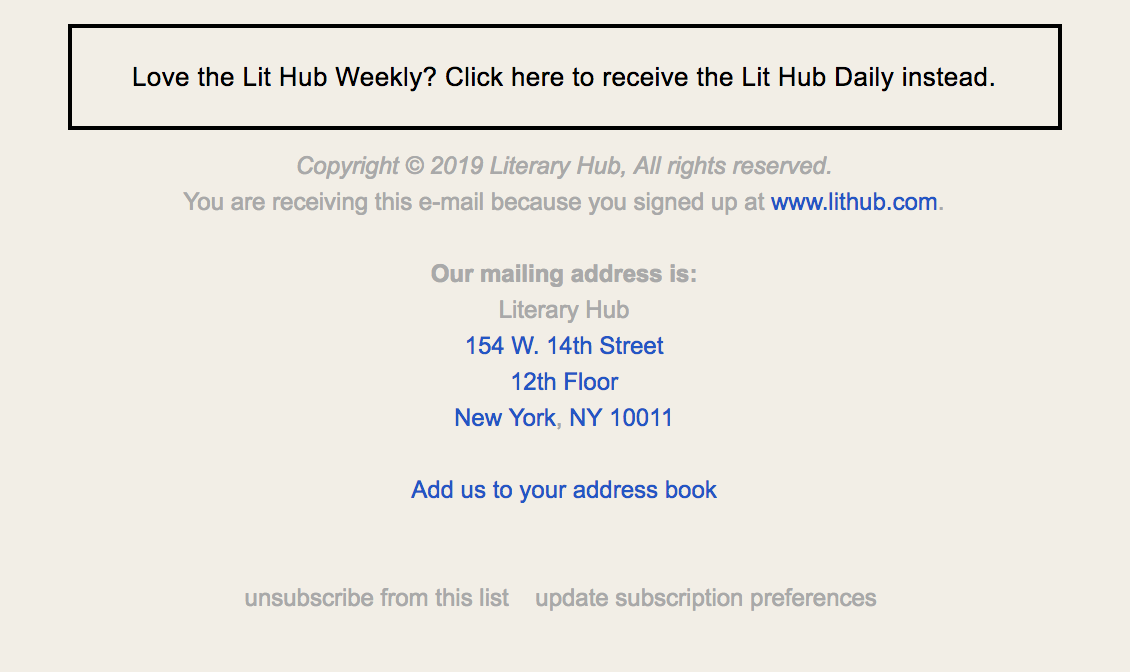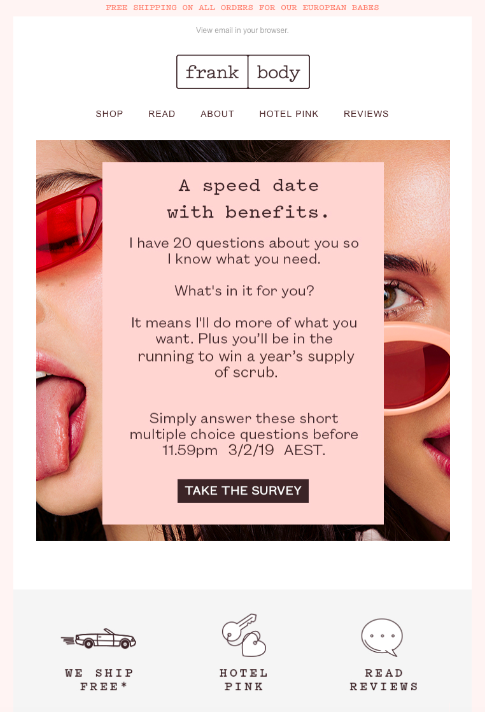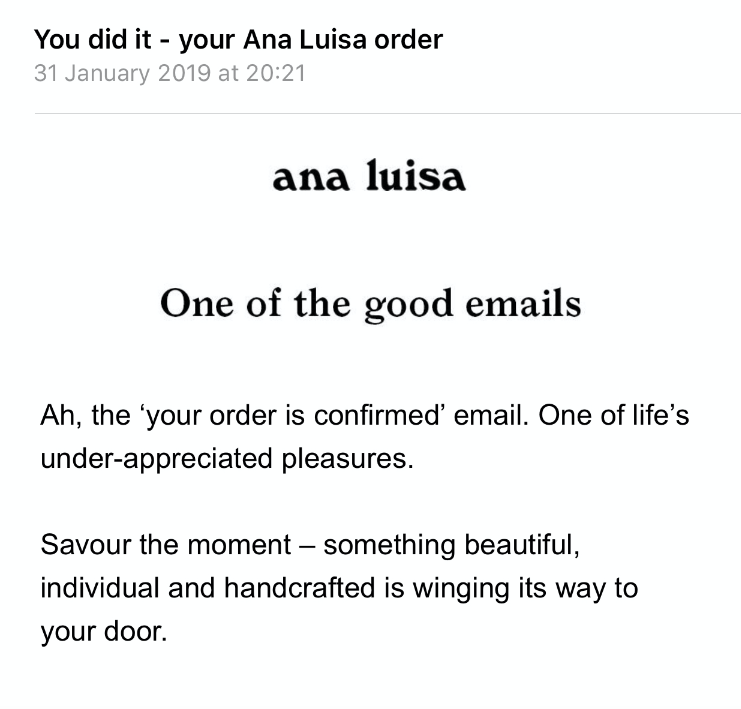The very first mass email was sent in 1978. It has evolved since then, and despite the ever-growing competition, has remained one of the most important marketing tools for businesses of all sizes.
Over the years, marketers have done a fair share of experimenting with this communication channel and learned that mastering the art of persuasion requires far more than good copy and attractive design.
If you, just like any successful marketer, are constantly on a look out for news ways to step up your email marketing game, we’ve got you covered. This article will walk you through email marketing practices that can help you achieve better conversion results that will translate into more sales.
1. Experiment with plain text and interactive emails
If you subscribe to email newsletters, you’ve probably already noticed that plain text emails are making a comeback. They’re easy to read and have fewer distractions. Studies show that users find such emails more personal and less-salesy, resulting in higher reply and click-through rates.
See how the question-and-answer website Quora uses plain text emails to ask their customers for feedback:

Source: Kayako
While plain text emails are good for connecting you with your customers, they aren’t ideal for communicating product buzz.
If you want to showcase a product or promote a deal in a captivating way, try jumping on the interactive email bandwagon this year.
Active elements come into their full glory only if recipients engage with them. But even though customers need to put in a bit more effort with interactive elements, studies show that interactive content is 23% more effective than static.
Take a look at the email by British DIY and home improvement retailer B&Q in which the company encourages the customer to “flip the switch” to “see things in a different light”:

Source: Really Good Emails
Each email campaign has a different purpose and a different audience. Instead of favoring one email style, see how you can make the best of both worlds. Remember to run tests and monitor performance to make data-driven decisions that will keep your subscribers engaged.
2. Be consistent with your efforts
Ever asked yourself how often you should email your subscribers? Well, you’re not the only one. This seemingly straightforward question has bothered marketers for years now. But like with most things in life, there’s no simple answer.
Startup Vitamins sells inspiring business quotes on mugs, posters, t-shirts, and other products. Back in 2016, the company sent out at least 2 promotional emails a week. The average open rate was around the 20% mark with click rates at 2% or more.
Since then, the company’s focus has shifted, and emails have become less regular, they send out 1 email every 2 weeks on average. This change has also brought a drop in Startup Vitamins email open and click rates.
The best email open rates for 2018 barely hit 15%, and the click rates were stuck around the 1% mark. On top of that, over the two-year period, the subscriber list has shrunk by about 1,000.
This proves that even after all these years, consistency is still what matters most in email marketing. Of course, if up until now you’ve been sending email campaigns haphazardly, suddenly blasting your subscribers 3 times a week can backfire.
A good approach would be to up the number of emails you send gradually. Let’s say you’re currently sending emails once a month. Start with stepping it up to twice a month, and if the results are improving, try reaching out to your subscribers on a weekly basis. Just don’t forget to monitor the performance stats of these campaigns.
3. Give a warm welcome to artificial intelligence
Artificial intelligence is changing email marketing for the better in more ways than one. By delivering timely and behavior-based emails, marketers are able to cut through the noise and get their products and services noticed.
Here are just a few examples of how AI is already helping businesses improve their mail marketing:
- Smart sending. If sent at the wrong time, even the most gorgeous and exciting email won’t bring results. But thanks to AI, you can boost your open rates by delivering emails at a time when your subscribers are most likely to open them.
- Personalized content that goes beyond “Hi {name}”. With AI, you can send smart recommendations based on customer behavior, location, interactions on your website or mobile app, and more.
- Optimized subject lines. Subject lines can be fickle. AI can analyze your open rates and help you determine the types of subject lines your customers respond to the most.
Marketers have always been fond of any innovation that will make their campaigns more effective. If you’re one of them, start investigating the latest AI tech you can use to enhance your company’s marketing strategy.
4. Be transparent about data you collect
It’s impossible to talk about email personalization without addressing data privacy.
Most customers know by now that marketers collect their data to create a better customer experience. In fact, 81% of people want brands to understand them better, but most importantly, know when not to approach them.
Did you hear about Target figureing out that a teenage girl was pregnant before her father did? Stories like these prove there’s a thin line between “We thought this might be interesting for you” and “We’re watching you”.
The best thing you can do as a business is to keep privacy matters transparent and be clear about your personalization efforts:
- Make your privacy policies easy to find
- Use simple language to explain how you collect and use visitor data
- Show customers how they can manage their privacy settings
- Doing this shows your customers that you respect their privacy which is crucial in building lasting relationships.
5. Offer easy subscription management
Blasting your subscribers with emails they don’t want to receive can negatively affect email deliverability. Sometimes it’s better to just let your subscribers go rather than keep collecting spam complaints.
The “industry standard for spam complaints is less than 0.02%. That’s about one complaint for every 5,000 recipients.” Anything above 0.02% is considered high and can get your account suspended.
One of the ways to shrink the number of these complaints is by simplifying email subscription management. Here are a few changes you can introduce today:
- Let your subscribers go. As a customer, there’s nothing more annoying than having to move mountains just to opt-out from a mailing list. The entire process should be seamless and intuitive, and the “Unsubscribe” button – easy to find.
- Offer subscription preferences. Your customers may not be interested in your blog news, but still want to get promos or company updates. Give them a say in what emails they want to receive from you.
- Inform subscribers how they were added to the list. There’s always a chance that your contacts forgot they subscribed to your list. By giving them a heads up, you eliminate possible misunderstandings.
Literary Hub sends weekly and daily newsletters with quotes, book reviews, and critiques on contemporary writing. They’ve found a subtle way to invite readers to manage their subscription preferences.
Their daily digest footer:

Their weekly digest footer:

The main takeaway? Let your customers decide what ends up in their inboxes. Doing this will get you writing more relevant and engaging emails, which will eventually get you higher conversion rates.
6. Use casual and relatable language
Gone are the days when looking “corporate” was the only way of securing a place in the market. Today, customers are more likely to follow brands that are human, make pop culture references, and crack jokes.
So if you want to connect with your audience on a more personal level, ditch the generic business jargon and third-person pronouns. Instead, speak the language of your customers.
The followers of natural skin care brand Frank Body are sassy fashion, skincare, and coffee lovers. The company’s marketing copy, including emails, use bold, jargon-free language.

Frank Body also uses first-person pronouns “me” or “I” which shrinks the distance between the brand and the customer, creating a more friendly relationship between the two.
The use of casual language can work wonders for B2B companies too. Here’s how Print-on-demand drop shipper Printful gets personal with subscribers in their blog promo email:

By addressing the pain points of your customers in a way they can relate to, you’re a building a bridge of trust. And the closer you are to your customer, the easier it’ll be for you to understand and help them.
But if promotional emails aren’t your cup of tea, try sprucing up your transactional emails. These emails usually have open rates as high as 40% which means it’s a great opportunity for marketers to spark user engagement.
And let’s be real for a second, when was the last time you received an order confirmation email that was anything other than boring as hell? However, there’s no rule that transactional emails have to be formal and cold. Making them dull is just hurting your click-through rates.
So, when you have the time, take a good look at your transactional emails and make them look like humans wrote it.
Here’s how jewelry store Ana Luisa lets their customers know their order is confirmed:

Pretty good, right? And here’s how they tell your order’s on its way:

Bottom line – your brand language depends on the industry you’re in. But no matter what industry it may be, don’t be afraid to experiment with your email copy.
Make the most of email marketing
Email is still the lifeblood of online marketing. While email marketing trends change every year, one thing stays the same – in order to deliver high-converting emails, you have to create content that people want to read.
As you just saw, there are several ways to tailor your emails so they speak to the audience you’re reaching out to. If you haven’t already, give content personalization and smart scheduling a go. Most importantly, don’t forget to test your efforts – with a bit of research and some patience, you’ll get there eventually!
Author bio:

Giedre Kronberga is a content marketer at Printful. When she’s not writing, you can find her re-reading Haruki Murakami novels or packing up a suitcase for another weekend getaway.

